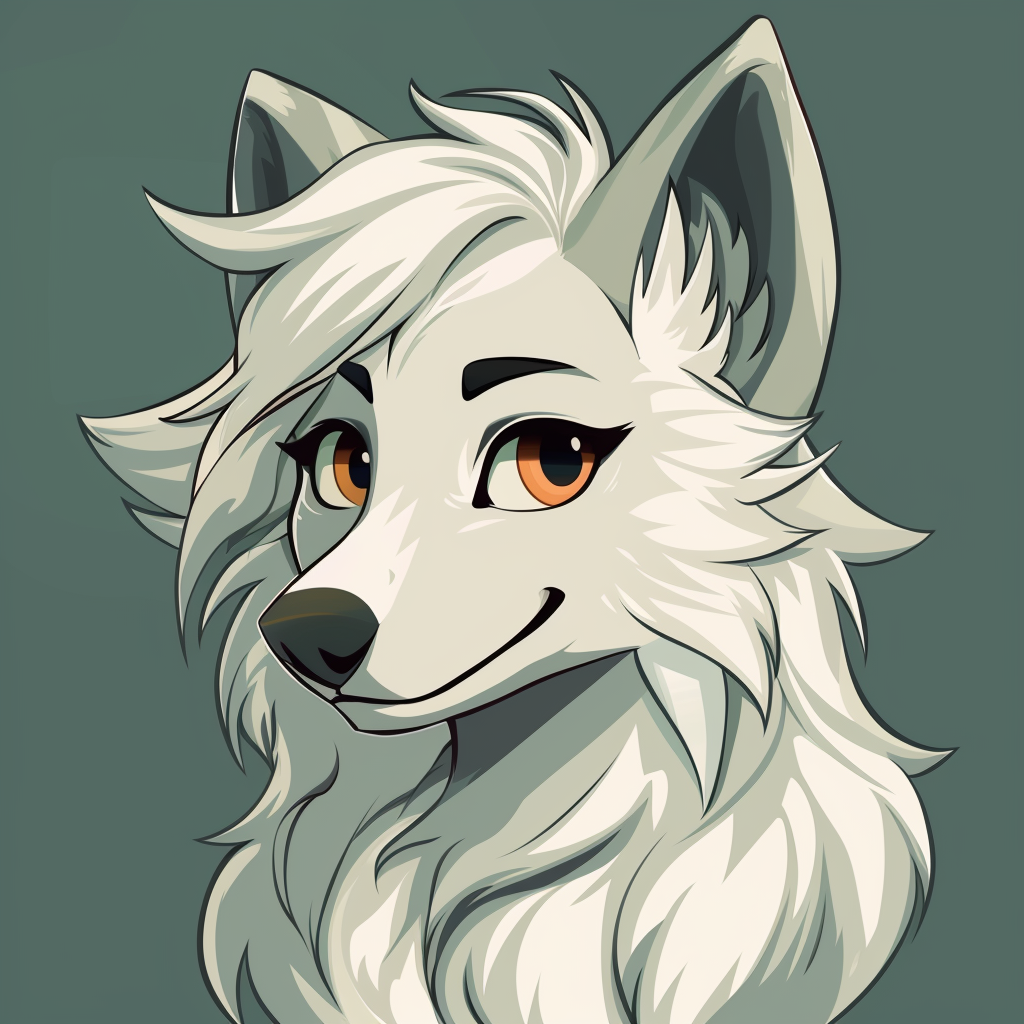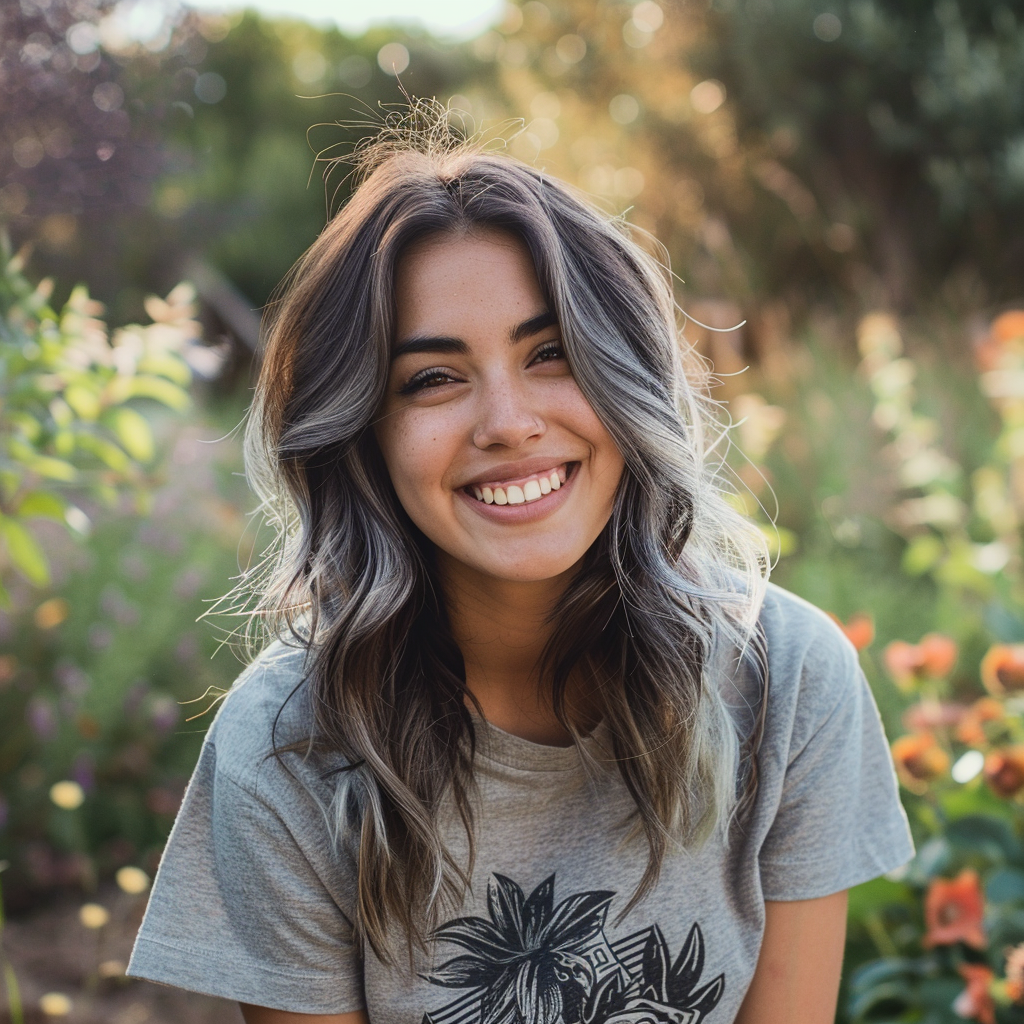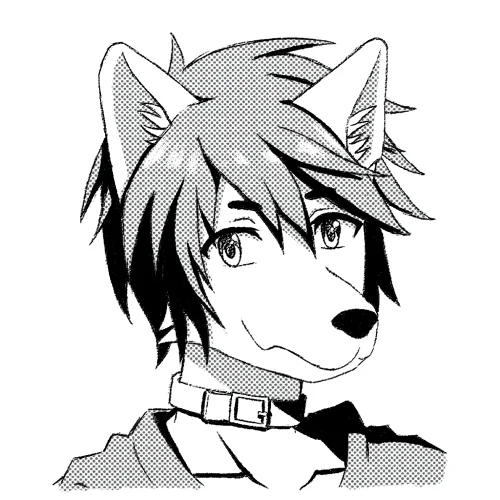
Introduction
Furries occupy a special place in the world of manga. They mix human and animal features. This style has become very popular worldwide. Our guide is aimed at both beginners and seasoned artists. It will help you learn how to create these characters. You will learn about anatomy, personality and style.
From basic sketches to complex details, the guide simplifies the process. So, let’s dive into the world of manga furries and learn how to get started.
Understanding Manga and Furry Art
Manga is a Japanese art of storytelling. It’s known for its expressive characters and vivid layouts. This style has strongly influenced furry art. In furry art, manga is evident in the large, soulful eyes and lively expressions of the animal-like characters. These characters mix human and animal features. They tell their own stories through their looks and actions.
What makes furry art so special?
Furry art is more than just animal characters with human features. It’s a rich mix of different styles, including manga. This art form allows artists to explore profound themes. These include identity and belonging, with animal characters that feel human. The manga style adds a striking touch to furry art. It makes it both playful and meaningful.
Creating manga-style furry figures is a painstaking process. It’s about mixing animal and human features in the right way. The key is in the details, such as fur texture and anatomy. Manga adds expressive faces to this mix. This mix creates characters that are both real and imaginary.
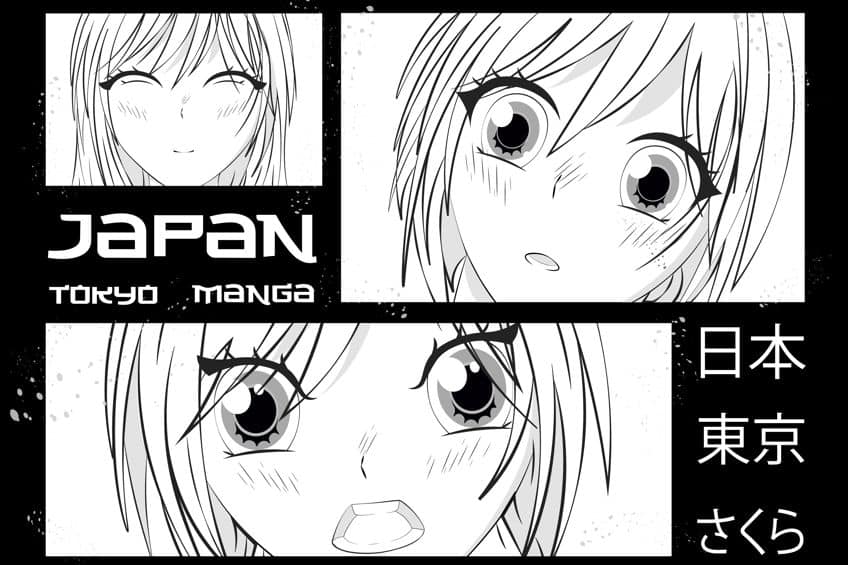
Example Of Traditional Manga Style Art
Image via Art in Context
Fundamentals of Drawing
Drawing manga furries is about creating part-animal and part-human characters. They come to life in the unique style of manga.
In this section, we will cover the most critical skills and techniques. These are essential for anyone who wants to draw furry manga characters. We’ll start with the basics to give you a solid foundation to help you become a better artist.
-
Basic Drawing Tools and Materials
Drawing manga furries starts with the right tools. It’s not about fancy equipment but finding what works best for you.
Pencils for Sketching and Detailing
Pencils are essential. Use soft pencils, like B or 2B, for your initial sketches. They’re great because you can easily erase and adjust your work. As your drawing becomes more detailed, you should switch to harder pencils. Pencils like H or 2H are perfect for sharp, fine lines.
Inking Pens for Bold Lines
Inking is a big part of the manga. It would be best to have fine liners or brush pens for this. They help you to draw the bold, flowing lines that manga is known for. You can play with the line thickness and texture with different tip sizes.
Erasers
Erasers can do more than just fix errors. A good eraser is the key to refining your drawings. Kneaded erasers are great. They lighten lines without removing them completely. So you can improve your drawing bit by bit.
The Right Paper
The choice of your paper is vital. You should choose a smooth, heavy paper when working with a pencil. It is easy to erase and redo it. Use a bleed-proof paper such as Bristol board for inking. It keeps the ink on the surface and ensures a clean look.
Digital Tools
If you prefer digital art, a drawing tablet and software are necessary. Tablets come in many sizes. Choose one that suits you. Software like Adobe Photoshop or Clip Studio Paint offers a range of tools that mimic traditional drawing techniques. They also provide additional features such as layers and undo, which can be very helpful.
Understanding Shapes and Proportions
Starting with Basic Shapes
Drawing manga furries starts with simple shapes. Think of circles, squares and triangles. These shapes are the first step in creating a character. For example, use a circle for the head. Rectangles and ovals can form the body and limbs. Learning these basic shapes is key.
Learning Proportions
Proportions make your furry characters look natural, even in manga style. It’s all about how the different body parts size against each other. Manga furry characters mix human and animal features. So, a character can have a human body shape but with animal-like arms and legs.
To recognise the proportions, look at people and animals. Notice how long the arms are in proportion to the body. Or how big a head is compared to the rest of the figure. This will help you to create figures that look right.
Putting Shapes and Proportions Together
When drawing furry characters, start with simple shapes. Then, slowly add details. Keep checking how these shapes fit together. Pay attention to the proportions as you draw. Ask yourself questions. Are the arms the right length? Is the head too big or too small? This will help you to improve your drawing.
Manga furries are diverse. So try out different animal features and human sizes. This will help you find your style. With a bit of practice, you’ll know what looks best.
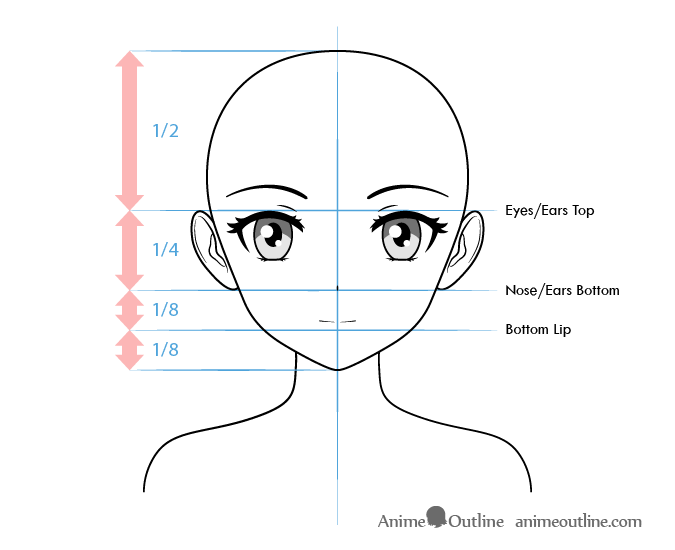
Diagram of Manga Head Proportions
Image via AnimeOutline
Sketching Basics: Lines, Shapes, and Construction Lines
Starting with Lines
Lines are the beginning of your sketch. In manga fur art, the lines form the basis of your character. Start with light, soft strokes. These first lines will help you shape your furry character. Don’t aim for perfection at the beginning. These first lines will help you find and explore the right shape. As you continue to draw, these lines will become more and more precise. They define the features and details of your character.
Building with Shapes
Once your lines are down, focus on shapes. The shapes form the body of your character. Use simple forms like circles, ovals and rectangles. These shapes represent different parts of the body. An oval can be the body, while circles represent the joints. Rectangles and long shapes are good for arms and legs. Dividing your figure into different shapes makes it easier to draw. This breaks down a complex character into simpler parts.
Using Construction Lines
Construction lines are the key. They aren’t part of your final drawing. Instead, they serve as a guide. Draw a vertical line through the face of your figure. This will allow you to place the eyes, nose and mouth evenly. Horizontal lines are good for placing the ears and eyes. For the body, these lines will help you keep everything in line. Remember that these lines are only for guidance. You’ll erase them later.
Creating a Furry Character
Creating a furry character in manga is a blend of art and fantasy. We’ll show you how to bring your furry character to life.
Designing a Unique Character: Personality, Backstory, and Traits
It’s fun to create a unique character in manga furries. It’s all about knowing their personality, background and traits.
Giving Your Character a Personality
When creating a furry manga character, you should start with their personality. Decide whether they are cheeky, shy, smart or cheerful. How they look and behave will depend on this. For example, a bold character could be tall and look confident. You could draw a shy character smaller and have a softer facial expression.
Think about how their personality influences their actions. A clever character might have a sly smile or sharp eyes. These small details show who they are, even without words.
Creating a Backstory
A character’s background story tells us where they come from and what they have experienced. It’s essential to make them feel real. Think about their surroundings. Did they grow up in a city or a forest? This influences their view of the world and their style.
Their personal story is also crucial. Have they experienced great challenges or adventures? This can show in their appearance. Perhaps they have a scar or a particular object they always carry.
Adding Unique Traits
Your character needs physical traits to stand out. These can be unique fur patterns, colours or features such as a bushy tail. They should match the animal part of your character but still look like a manga. Behavioural traits are just as important. How does your character move? Does it have any common gestures? For example, a thinker might touch their chin a lot. Someone energetic might move a lot, with lines that show action.

Manga Style Furry Headshots
Image via O’Reilly
Animal Anatomy vs Human Anatomy in Furry Characters
When creating manga furries, knowing how animal and human bodies are similar and different is important. This will help you to create characters that combine these characteristics well so that they’re realistic and can be identified within the manga world.
Learning Human Anatomy Basics
Start by understanding human anatomy. Look at how the arms, legs and head relate to the rest of the body. This will help you correctly determine your figure’s basic shape and movements.
Adding Animal Features
Next, you bring in animal features. You can be creative here. Choose an animal that matches the character you want to draw. Take a close look at the animal. Look at its limbs, the shape of its head and its fur. Your goal is to combine these animal parts with a human body. For example, if you’re drawing a lion, you should add a mane, cat-like eyes and strong legs.
Mixing Human and Animal Anatomy
The balance between human and animal characteristics is crucial. You don’t want the animal parts to take over completely. But they also need to be clear enough to see. It’s about mixing the two in a way that works well together. Adjust things like the size of the ears, the length of the limbs or the shape of the face. This blend should look natural and appropriate for both the human and animal parts.
Using Anatomy to Show Personality
Use the character’s body to show who they are. If your character is fast and light, make their legs look strong and agile, like a cheetah. If they are wise and calm, maybe add some owl-like features. This way, the body helps the character tell their story.
Drawing Furry Heads and Facial Expressions
Drawing the heads and facial expressions of manga furries is integral to creating your character. This step helps to show your character’s personality and emotions and makes them interesting and relatable.
Sketching the Head
Drawing fur heads begins with correctly determining the basic shape. This shape depends on the animal your character is modelled on. For example, a fox-like character could have a long, pointed head. A bear-like character could have a rounder head. Pay attention to animal features such as ears, snout and eyes. These should blend well with human-like features to make your furry character believable.
Creating Expressive Eyes and Features
The eyes play a central role in portraying your character’s emotions. Try out different shapes and sizes for the eyes to express feelings such as joy, sadness or surprise. Eyebrows also play a significant role in portraying your character’s emotions.
The mouth and nose are also important. The mouth can range from an animal snout to a more human-like shape. How you draw the mouth can show a range of emotions. The nose can be simple or detailed to match the animal aspect of your character.
Bringing Emotions to Life
Facial expressions not only show emotions but also reveal your character’s personality. A shy character might have downturned eyes and a small smile. A bold character might have a wide smile and bright eyes. Practise with different facial expressions to add depth to your character.
Adding Details for Realism
Once you’ve got the expression right, add finer details. These include fur texture, whiskers and special markings. These details make the face look real and unique. You should make sure that the fur looks different on different parts of the face, such as the cheeks or forehead.
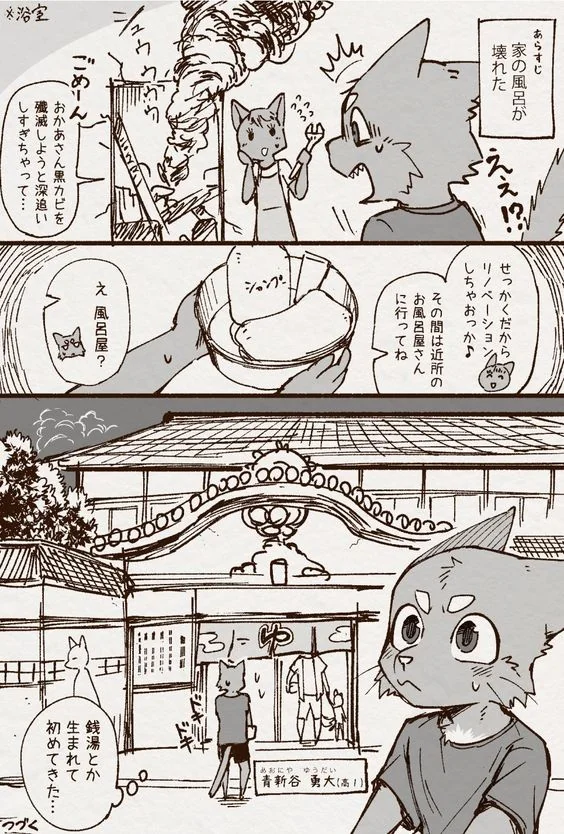
Furry Manga Panels
Image via Reddit
Body Proportions and Poses
Finding the right body proportions and poses is essential when drawing manga furries. We’ll look at how to remove your furry characters with the right body size and shape. This includes mixing human and animal features so that they look good.
-
Manga-Style Body Proportions
Manga characters, including furries, often have unique body proportions. These proportions are a bit different from real human bodies. They are styled to fit the artistic look of manga.
Head and Body Size Ratio
A key part of manga proportions is the head-to-body ratio. In adult characters, the body is usually seven to eight times the size of the head. This gives them a more realistic look. However, as with’ chibi’ characters, the head is bigger for a cuter or younger look. It can be around a third of the figure’s total height.
Playing with Proportions
The proportions in the manga style are flexible. You can change them to show different things about your character. A brave character might have broad shoulders and look strong. A sneaky character could be thinner and look fast.
In furry manga, this means you can have fun with animal features. You can mix them with human forms in creative ways. This makes your characters unique and memorable.
-
Dynamic Posing for Character Expression
Poses are crucial in bringing manga furry characters to life. They do more than show how a character stands or sits. Poses express emotions, personality, and action.
Begin with a Line of Action
Start your pose with a line of action. This is a simple line that shows your figure’s main movement or posture. It’s the backbone of the pose. It sets the direction and feeling of the character. For example, a curved line indicates a playful, active pose. A straight line could represent a serious, calm pose.
Using Real-Life Poses as Reference
It is helpful to look at real people or pictures to get ideas for posture. Observe how the body language changes with different emotions. This will make your drawings more believable if you take them from real life. You can also try posing yourself to understand how it feels and looks.
Keeping the Pose Balanced
A pose must feel balanced. Even if it’s a strange or extreme pose, it should look like it could happen. Think about how the weight of the figure is distributed. This makes the pose feel real and grounded.
Colouring and Shading
In manga furry art, colouring and shading are pivotal for bringing your characters to life.
-
Basic Colour Theory
Colour theory is the key to designing appealing manga fur figures. It’s all about choosing the right colours to emphasise your character’s personality.
Complementary Colours
Opposite colours on the colour wheel are referred to as complementary colours. They create a bright and eye-catching look. Use them to emphasise important parts of your character.
Analogous Colours
These are positioned next to each other on the colour wheel. They produce a calm, harmonious look that is perfect for backgrounds or calming characters.
Warm and Cool Colours
Warm colours like reds and oranges show energy. Cool colours like blues & greens are more calming.
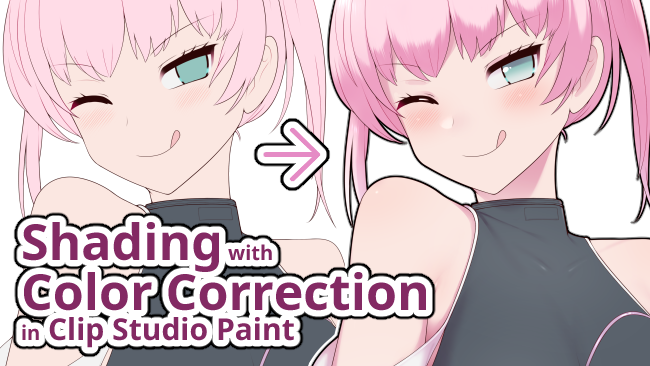
Example of Importance of Shading and Colouring
Image via Clips Studio TIPS
Shading and Highlighting Techniques
Shading and highlighting add depth to your characters. They show where the light comes from and how it hits the character.
Shading
Think about where your light source is. Shade the areas that would be darker, like under the chin or arms. Use darker shades of your base colour for a realistic effect.
Highlighting
Add light spots where the light hits directly. This could be on the head, shoulders, or knees. Use lighter shades or white for strong light.
Digital vs Traditional Colouring Methods
Whether you choose digital or traditional colouring depends on what you like and what tools you have.
Digital Colouring
With digital tools, you have many colours and effects to choose from. Programs like Adobe Photoshop make it easy to change colours and try new things. You can use layers to add shadows and light. This also makes it easier to correct mistakes.
Traditional Colouring
In traditional colouring, markers, pencils or watercolours are used. Each of these techniques has a different look. You need to plan more with traditional tools because mistakes are harder to fix. With markers or pencils, you can mix colours to create depth. Watercolours are good for smooth colour changes.
Adding Final Touches to Your Manga Furry Art
The finishing touch is what characterises your manga furry art. It’s about polishing and refining your work. This stage is where everything comes together and puts the finishing touches on your art.
-
Refining Details
First, take a good look at your drawing. Check for parts that need more detail or cleaning up. This might mean making lines sharper, adding fur textures, or small things like whiskers. Make sure these details match the light in your drawing and its overall style.
-
Adding Special Effects
If you’re drawing digitally, now is the time for special effects. This could be a glow for magical characters, a blur for action scenes, or even sparkles for a fun look. Use these effects to enhance, not overpower, your art.
-
Final Review and Adjustment
Lastly, review your whole artwork. Sometimes, taking a break and coming back gives you a fresh view. You should see if there’s anything to change, like colours, shapes, or details.
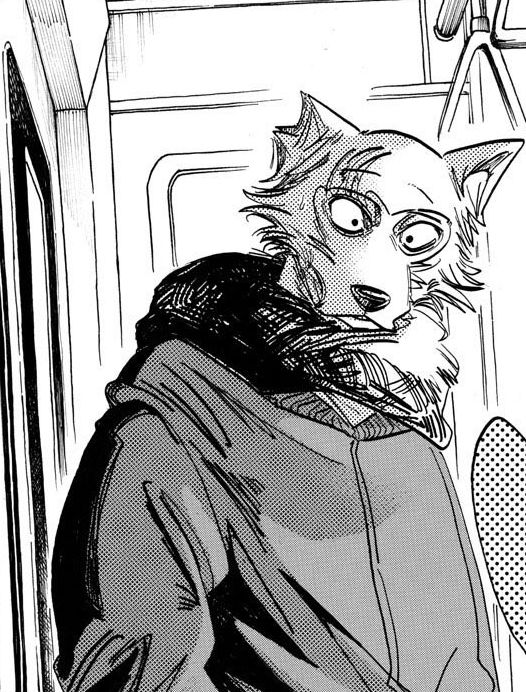
A Panel From The Furry Manga Beastars
Image via Pinterest
Conclusion
Making manga furries is a creative mix of artistic skills and understanding of humans and animals. You start with simple sketches using lines and shapes. Then, you learn to mix human and animal features in your characters. Colouring and shading are also necessary. They make your figures look lifelike and alive.
Whether you use a computer or draw by hand, the ideas about size, poses and colours are the same. Every figure you draw is not just art. They have their own stories and characteristics that make them unique. You always have to try out and learn new things. And most importantly, you have to enjoy bringing these fun, imaginative characters to life.

